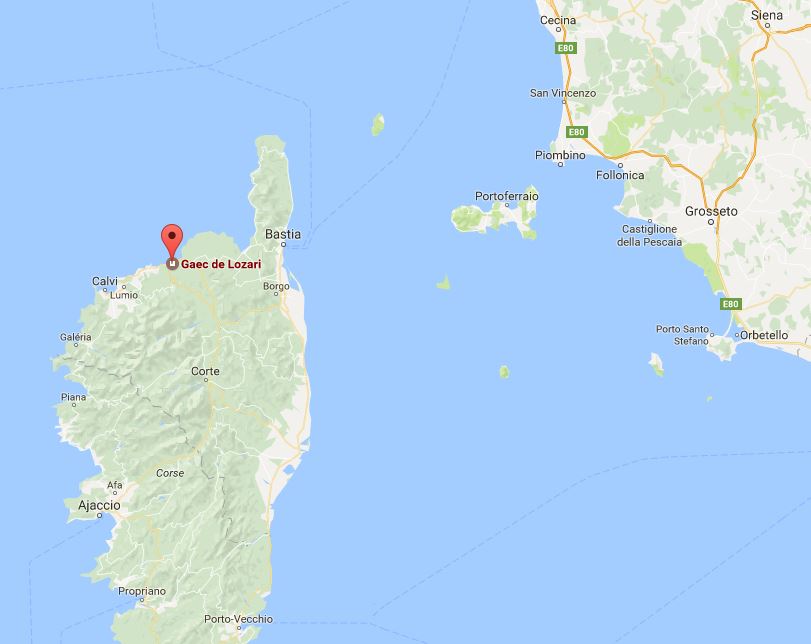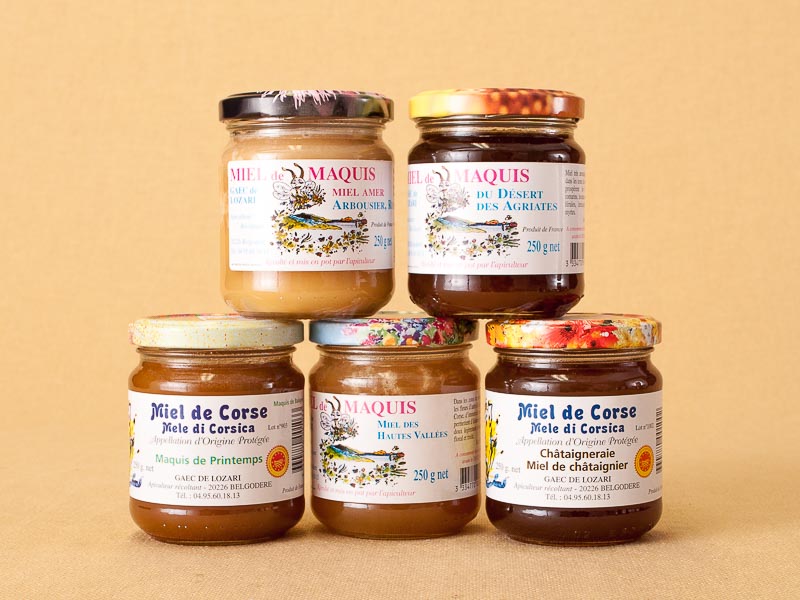
Owners Ihsan and Valerie Gurdal first discovered the honeys of Gaec de Lozari when visiting a Paris boutique in 2002. They immediately reached out to owner and apiculteur Michel Gacon, to see if they could bring his honey to Formaggio Kitchen. Michel and his brother François worked at a scale where they sold all they produced within France and had no real interest in exporting to the US. Undaunted, Ihsan and Valerie continued their correspondence and over time, Michel agreed to a trial shipment. Six months after their first conversation, the order was shipped.
Introducing this honey to Formaggio Kitchen customers was a labor of love for Ihsan and Valerie. These rustic, raw honeys are naturally crystallized and full of wild flavors - some floral and sweet, others funky and bitter. Their unique and special character are an apt reflection of the Corsican landscape that produces them. Customers soon developed a taste for these honeys, subsequent orders were placed and received until 2012 when our orders stopped coming. Michel fell ill and production was difficult even for their local customers. Ihsan reached out to Michel's daughter Marylène but she was busy opening her own boutique on the island.
Ihsan and Valerie decided it was time to try one last time, with a trip to visit Marylène in person and get a new order prepared. The visit was a huge success, not only confirming our order for honey, but also bringing in some of Marylène's traditional Corsican preserves.
Producers of quality traditional products are few and far between these days and building and maintaining these relationships can take work. We know our customers truly appreciate these products and we strive to discover them and keep them on our shelves. This is what we do.
Her preserves range from familiar flavors like strawberry, apricot, and fig to more unusual ones like arbouse, a sweet red berry that grows on strawberry trees native to the Mediterranean and tastes somewhat like a fig.
Corsican Honey AOP

The island of Corsica is designated as a territorial collectivity and one of the 18 regions of France, although it maintains a distinctly Italian culture. Even the native Corsican language is more closely related to Italian than to French. At its heart, Corsica is uniquely Corsican; home to delicious honey, preserves, and some of our favorite cheeses.
Honey from the island of Corsica obtained the AOC label and AOP classification in 1998, making its production and labeling protected by the government on the concept of terroir (just like cheese and wine!). Gaec de Lozari is based in the Belgodère region of the island and has 500 to 600 hives they move throughout the year to capture the blooms at just the right time. Hives travel from the rough coastline up to 1000 meters high into the mountains, following the flowering Corsican vegetation.
Corsican Honey from Gaec de Lozari
Maquis du Désert des Agriates - Harvested northeast of Belgodère, this is typically an aromatic wildflower blend. The honey is harvested from heather, rosemary, wild lavender, wild fennel, mastic, cistus and myrtle. This is a stronger honey with a rich caramel color and some bitter notes, but a complex and lovely finish.
Miel d'Arbousier et Romarin - This is a unique honey made from the collected nectar of the strawberry bush and the rosemary plants that grow wild along the mountainous coast. The strawberry bush, also called 'Corbezzolo' in Italian, flourishes on Corsica’s Southern neighbor Sardinia. Lighter in color, this is a very, very bitter honey and is usually an acquired taste.
Miel de Maquis de Printemps - This is a sweet and intense honey with a complex aroma. Collected from March through May this honey is typically harvested in the Balagne region of Corsica. Gaec de Lozari's spring honey is made from the nectar of asphodele, clover, heather, thistle, and broom flower. It is a deeply golden, with a delicate caramel or cocoa flavor and an aroma of licorice or coconut.
Miel de Châtaignier - This honey is another acquired taste. Later harvest honeys tend to be stronger than those harvested at the start of the season, and this chestnut honey, harvested from July through late autumn is known for its strength and distinctive funkiness. While honey-producing hives are concentrated around chestnut trees, flavor notes are also provided by the undergrowth and its surrounding vegetation: brambles, clematis, anthyllis, broom, nepita, and marjoram.
Miel des Haute-Vallées - Collected from the high valleys of northern Corsica where anthyllis, Corsican thyme (erba barona), and strawflower grow in abundance, this honey is floral, fruity and light. An easy and natural pairing for our strong, stinky Corsican cheese favorites: A Casinca and U Bel Fiuritu.
Author, Beth Wittenstein is a cheesemonger at Formaggio South End and Online Media Manager for Formaggio Kitchen Cambridge. When she isn’t taking photos of cheese, you can find her making intricate confections in her kitchen.


